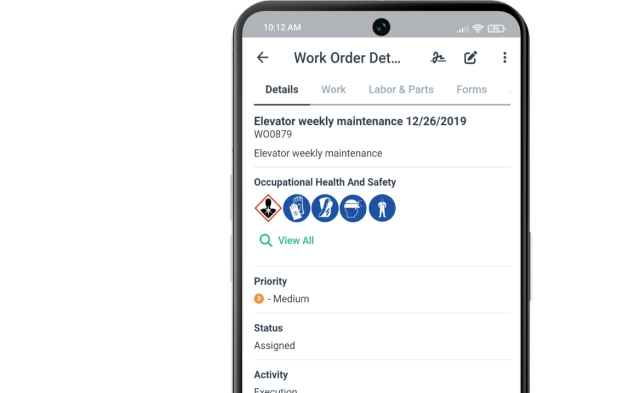Get a Free WorkTrek Demo
Let's show you how WorkTrek can help you optimize your maintenance operation.
Try for freeKey Takeaways:
- The U.S. Marine Corps increased operational efficiency after digitizing its work orders.
- Unplanned downtime is costing the UK economy an estimated £23 billion a year.
- Air India came under scrutiny for maintenance lapses tied to poor record-keeping.
Have you ever had a technician misplace a work order, sparking a chain of delays and chaos?
Or ordered too many spare parts, only to watch them gather dust in a warehouse until they became obsolete?
Without an efficient system, problems like these are all too common.
However, it doesn’t have to be this way.
With modern maintenance management software, you gain visibility and control over your operations like never before.
Are you wondering how it works?
Continue reading to discover the benefits of maintenance management solutions, accompanied by real-world examples from various industries.
Improved Work Order Management
With maintenance management software, your day-to-day tasks become less chaotic and more efficient, thanks to automated work order management.
Take our own system, WorkTrek, for example.
It automates every step of the work order process, from start to finish, beginning with the request.
With WorkTrek, work requests can be submitted through multiple channels, including our mobile app, email, a request portal, or an app created just for you.
You can quickly approve them, create and assign tasks or work orders, and track progress, all from a centralized database like this:
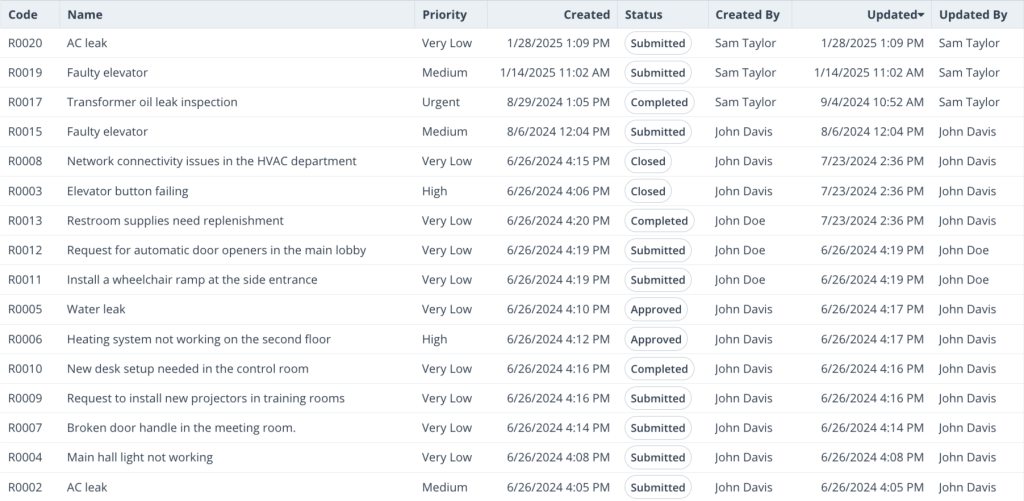
Additionally, requests are fully customizable, so you decide what information is required each time, from priority levels and locations to categories and even photos of the issue.
Work orders are just as efficient.
You can create, schedule, assign, and prioritize them all in one place, capturing the right data with required fields, like time and materials, signatures, and more.
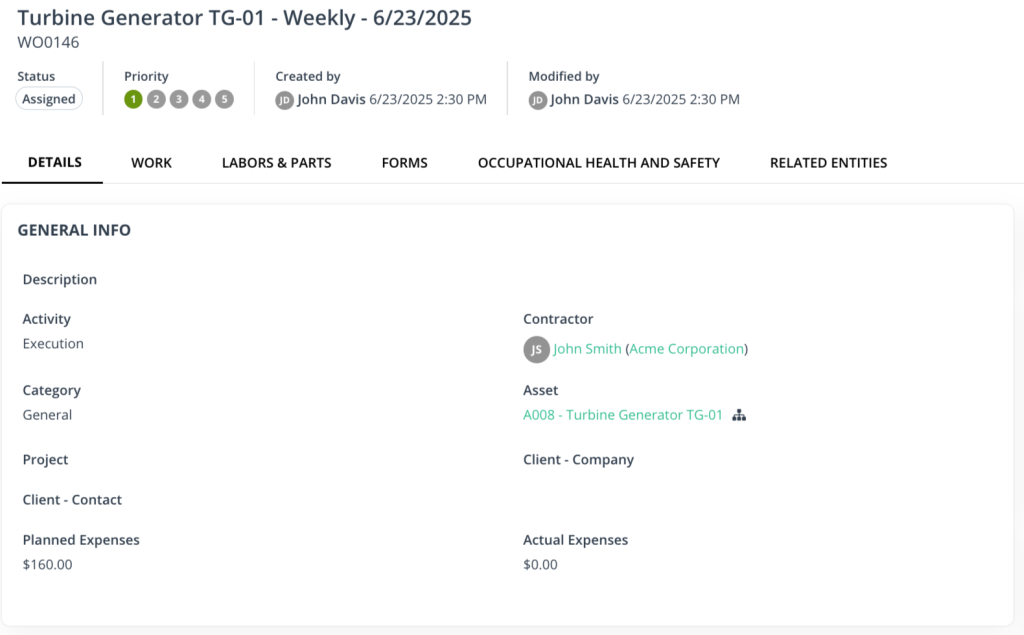
Once the work has been completed, all stakeholders are automatically notified, eliminating the need for text messages or calls to check request statuses.
In short, WorkTrek ensures every team member knows what to do, how to do it, and by when, ultimately boosting overall productivity and operational efficiency.
The U.S. Marine Corps is a great example of how transformative automated work orders can be.
Earlier this year, they switched from a paper-based system to a digital one and noticed improvements almost instantly.
Much like WorkTrek, their system serves as a central repository for detailed work documentation, organizing every step of the maintenance, repair, and overhaul process.
Business Support Specialist Wesley Crocker praised the system, noting it is far more effective than the paper-based approach they had before:
“What we have now is a digital version of the work orders within a program that is easily accessible, has a convenient search function, and houses inspection plans and quality call points. It’s making operations more sustainable and efficient.”
Paper is no longer wasted, and teams no longer need to search through binders, folders, and filing cabinets, or chase signatures.
Instead, all information is stored in a single system, allowing teams to focus on their work rather than on coordination tasks.
And that’s exactly what maintenance management solutions like WorkTrek are built to do.
Simplified Preventive Maintenance Scheduling
If you’re struggling with preventive maintenance and find yourself caught in a cycle of reactive fixes, maintenance management software is the solution you’ve been waiting for.
This kind of software automatically schedules preventive maintenance (PM) based on your own parameters, enabling you to execute your proactive strategy effectively.
For instance, you can set up scheduling by time triggers—daily, weekly, monthly, or yearly—or by usage metrics like mileage, operating hours, temperature, or pressure.
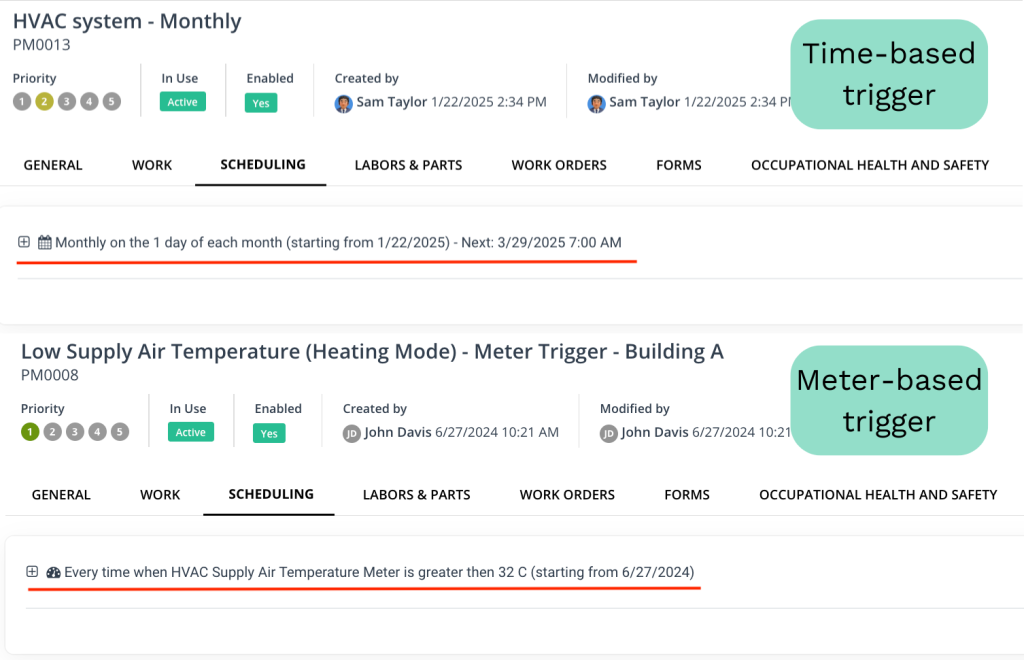
The system notifies you when maintenance is due, ensuring assets receive the care they need, right when they need it.
This enables you to break free from reactive maintenance and significantly reduce unplanned downtime.
That is no small thing.
The 2025 Mainstream survey found that UK organizations spend 55% of maintenance budgets on reactive activities, costing the economy an estimated £23 billion a year in avoidable downtime.
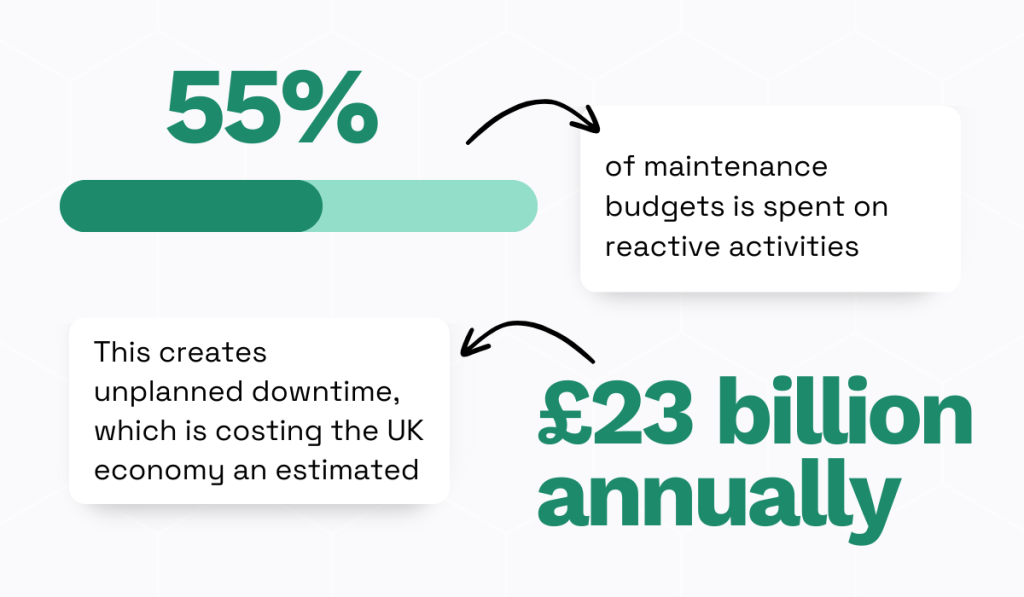
In contrast, organizations that keep reactive maintenance below 30% experience 78% fewer unplanned production interruptions, according to the survey.
This is because preventive programs help catch problems early, giving you time to act before breakdowns occur.
Chad Tearman, Senior VP of Distribution at Sonny, a car wash equipment manufacturer and a service leader with 30 years in the vehicle wash industry, agrees.
He has seen the difference PM can make in car wash equipment firsthand:

However, this principle applies not only to car washes but also to every industry and every type of asset, including brand-new ones.
As Tearman explains:
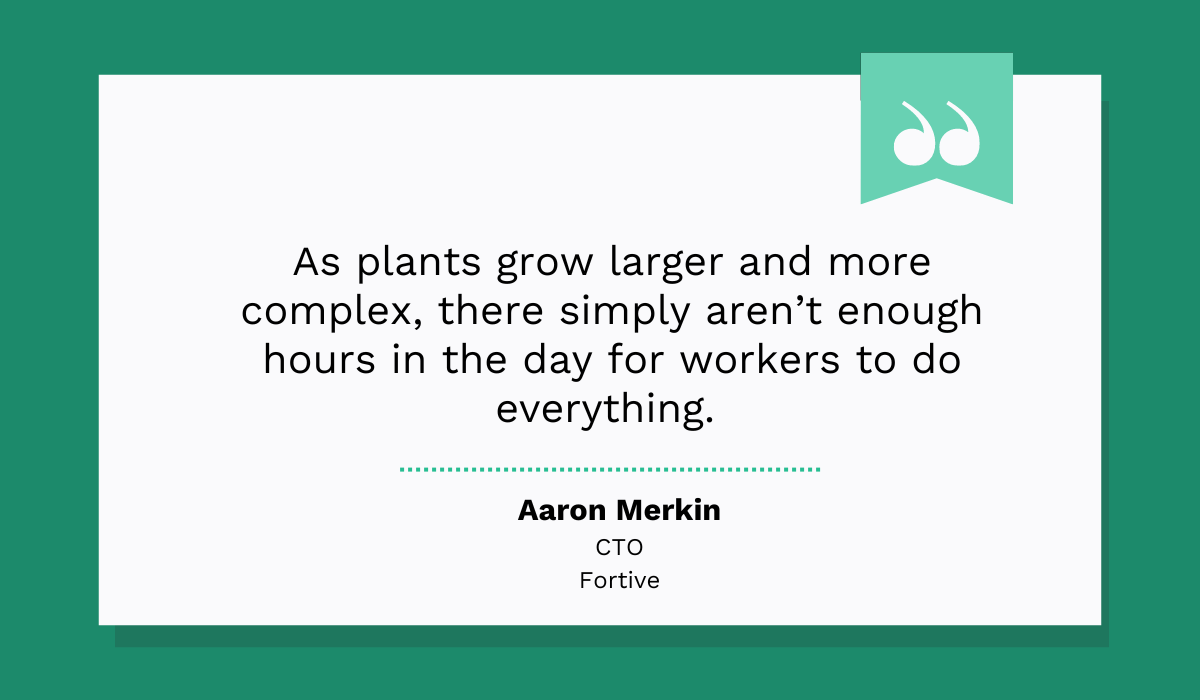
“You might think it’s brand new and doesn’t need maintenance, but a year later it could be in shambles and now you’re really behind, missing out on revenue.”
He compares it to buying a car.
You can drive it off the dealership lot brand new, but neglect the oil changes, and sooner or later, it’s going to let you down.
Maintenance management software ensures situations like that never occur.
It gives you a consistent, smart way to prevent issues, extend the life of your equipment, and minimize any operational disruptions.
Accurate Inventory Tracking
With maintenance management software, you never have to worry about overstocking or understocking spare parts and key materials again.
Compared to outdated manual inventory tracking, this technology provides more accurate and current data.
Benjamin Reichenecker, Founder and CEO of the inventory management solution PartsCloud, agrees, explaining why manual methods typically fall short:

Indeed, manual tracking takes too much time, drains energy, and inevitably leads to errors that require even more effort to fix.
Maintenance management software eliminates these problems.
It monitors your stock levels in real time, sending alerts when parts run low, even across multiple locations.
Your team can check and update stock, transfer inventory between warehouses, and access detailed data about each part, including make, model, quantity, and user manuals, all on the go.

Some solutions even enable you to track parts by serial number, giving you insight into the history of the part, from initial warehouse through the installation to the disassembly.
That way, you know precisely how each part is used.
All of this helps you optimize your inventory, ensuring you always have just the right amount of stock.
It’s an effective way to reduce overspending and free up company cash flow.
Take it from Alstom SA, the French multinational rail transport systems manufacturer.
After merging with Bombardier Transportation in 2021, their global operations expanded significantly, and so did their inventory.
To help manage this growth, they digitized their maintenance operations, which ultimately led to better inventory planning, more accurate availability tracking, and tighter cost control.
Alexandre Domingues, Chief Digital Services Officer at Alstom, explains:
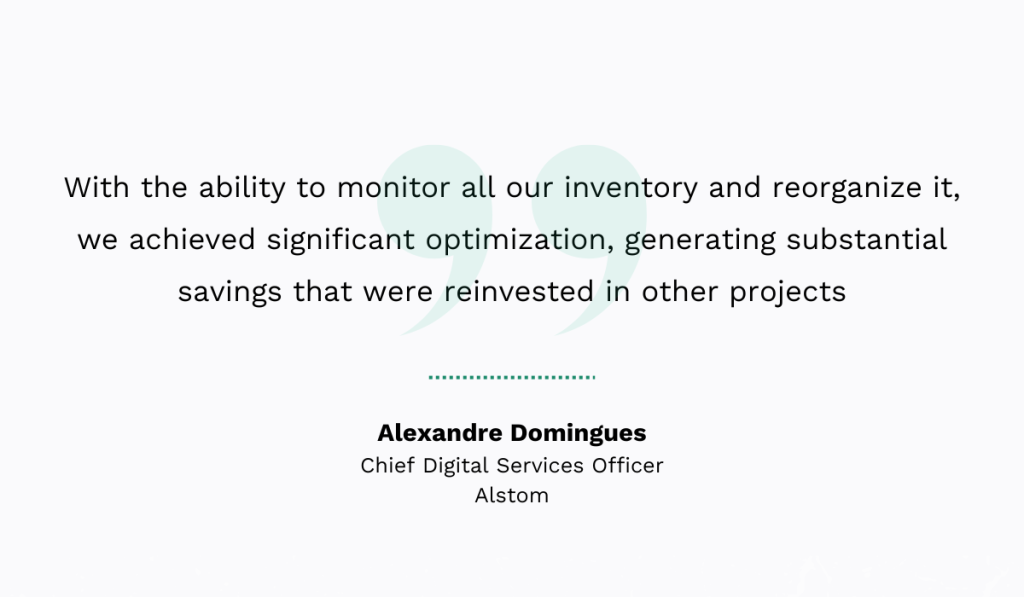
Maintenance management software can do the same for your business.
It gives you full visibility and control over your inventory, ensuring you always have exactly what you need to get the job done, without wasting resources.
Organized Record-Keeping
Before maintenance management software, upkeep teams struggled with disorganized paperwork, missing data, and the constant risk of noncompliance hanging over their heads.
Those days are over.
Maintenance management solutions serve as a central digital hub for all your maintenance data, allowing you to access relevant information in seconds.
For instance, you can upload safety rules, LOTO procedures, and PPE reminders for technicians, or set hazard alerts for the field.
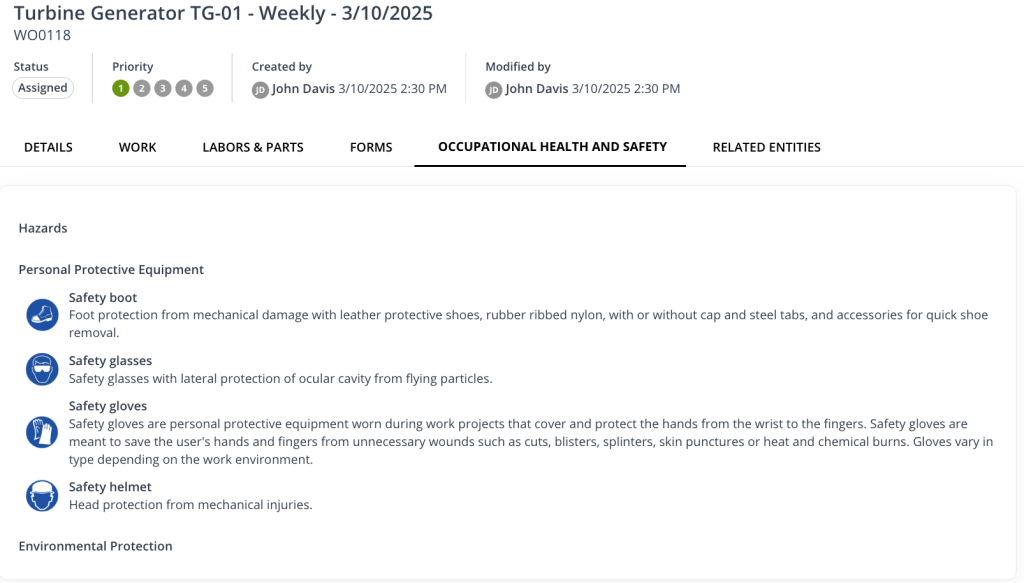
Previous work orders are just as easy to find, complete with details on who performed the work, when it was done, what was repaired, which parts were used, and more.
Once the work has been completed, the system records it, and it stays there, always available when you need it.
That matters today more than ever.
Having complete, accessible digital records makes compliance far less stressful, especially during regulatory audits.
Instead of scrambling for paperwork, you can produce documentation instantly, ultimately avoiding hefty fines and penalties.
This is particularly crucial in industries like aviation, where the margin for error is tiny.
Daniel Tautges, SVP at the aviation software company Component Control, puts it best:
“The aviation industry is under constant pressure to increase efficiency, reduce downtime, and maintain the highest levels of safety and compliance. Digitalising aircraft records is no longer a luxury—it’s a necessity.”
According to Tautges, well-organized digital records reduce safety risks from counterfeit parts, strengthen regulatory compliance, and protect airlines’ reputations.
With growing complexity and stricter oversight, paper-based systems simply can’t keep up with the speed, accuracy, and security modern aviation demands, he adds.
The recent situation with Air India is proof.
Earlier this year, the airline came under scrutiny for maintenance lapses tied to poor documentation.
Investigators discovered that some records were still in Excel, despite requirements to use dedicated software.

Even after switching systems, mistakes continued to persist.
Components were used beyond their service life, seatbelts malfunctioned, and other serious issues arose.
The fallout damaged their reputation and nearly derailed a merger.
And that was a relatively mild outcome. It could just as easily have led to lawsuits or serious safety incidents.
The lesson is simple: when vital information is centralized, accurate, and instantly accessible, teams work safer, smarter, and in compliance with rules and regulations.
That’s where maintenance management software comes in, providing peace of mind and reliable data.
Advanced Reporting
However, this kind of software doesn’t just display static data.
It also generates dashboards and reports on KPIs like MTBF, MTTR, costs, and more, giving you the insights you need to make data-driven decisions and optimize maintenance strategies.
These dashboards are designed to be as intuitive as possible and to show you the current state of your operations at a glance.
You can see how much work is finished or unfinished, what it’s costing you, and where your attention is needed the most.
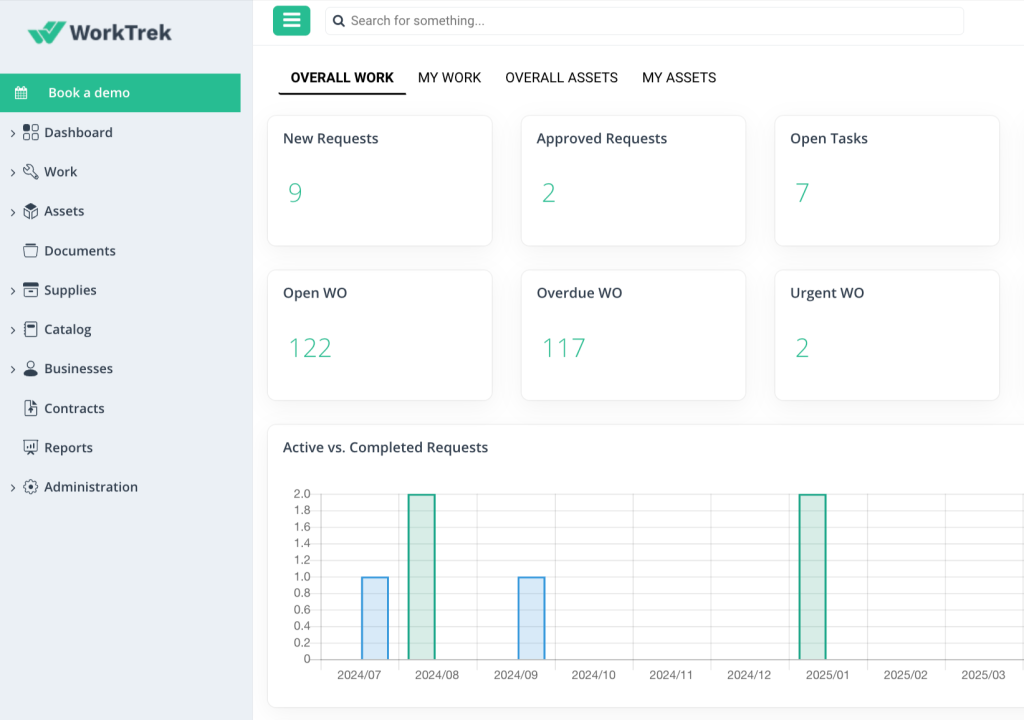
When you need deeper insights, customizable reports enable you to analyze various KPIs and evaluate your maintenance effectiveness in greater detail.
Many systems even allow you to schedule reports at regular intervals, automatically sending them to your team via email.
That way, the relevant people always have the right information at the right time.
The 2025 Mainstream survey we mentioned earlier offers some insight into why this matters.
As it turns out, the UK’s asset-intensive industries typically use less than 27% of the data they collect for operational decisions.
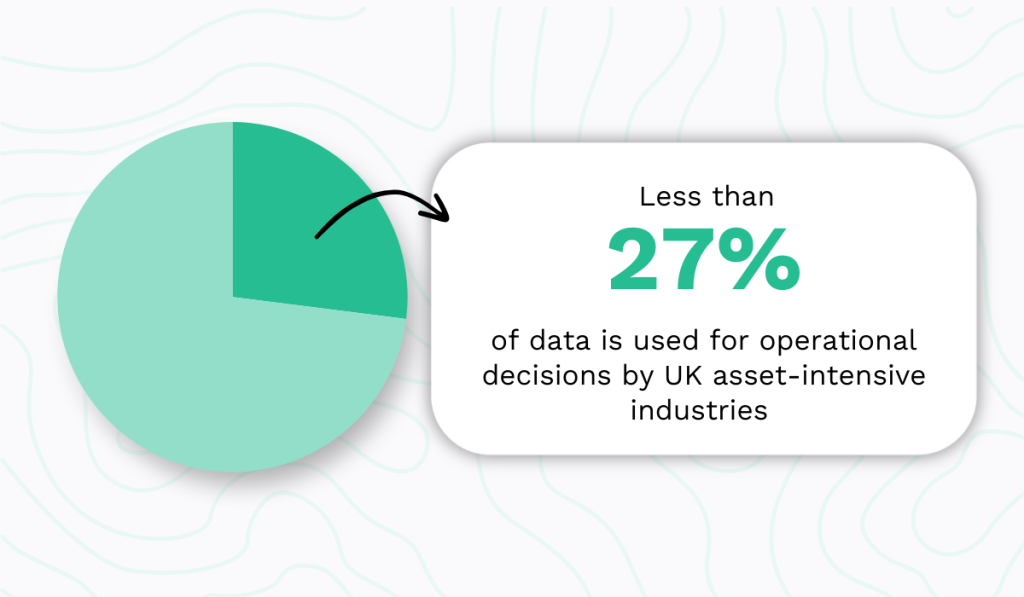
This means that modern maintenance operations generate huge volumes of data.
However, sifting through it, deciding what’s important, and turning it into actionable insights is a massive challenge.
Maintenance management software does that work for you, presenting insights in a clear, ready-to-use format.
UK-based retail company NEXT understands how beneficial this can be.
They use their software to track key KPIs, which helps them identify the biggest opportunities for improvement.
Matt Winter, Head of Engineering at NEXT, explains:

For example, they monitor the balance between reactive and preventive maintenance.
If the software reveals that too many hours are being spent on reactive work, they know action is required:
“So of course it means we have got to invest more time, maybe even lay on overtime, in order to get back on track.”
In a way, the software acts like a virtual consultant that monitors operations, highlighting inefficiencies, and guiding teams on how to fix them.
No guesswork. No intuition.
Just clear, actionable data that drives smarter maintenance decisions.
Conclusion
Maintenance management software helps you work smarter, not harder.
It streamlines operations, reduces downtime, maximizes asset performance, and lowers costs, all in one easy-to-use platform.
At the end of the day, better systems lead to better results.
So, don’t let outdated processes hold you back when the tools to boost productivity, cut waste, and build resilience are already here.








